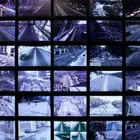Rambler OP wrote
Reply to comment by div1337 in An eye-opening look at law-enforcement surveillance (Paywall, disable javascript or read text in comment within this post) by Rambler
If you disable Javascript, you can see it. Sorry, I didn't realize it had a paywall with javascript enabled. Here is the text:
An eye-opening look at law-enforcement surveillance
Jon Fasman, The Economist’s US digital editor, argues that action must be taken now to restrain the growing surveillance state Books & arts Jan 26th 2021
We See It All: Liberty and Justice in an Age of Perpetual Surveillance. By Jon Fasman. PublicAffairs; 288 pages; $28. To be published in Britain in March by Scribe; £16.99
JON FASMAN’S new book, “We See It All”, is a brisk and informative overview of one of the more pressing issues in criminal justice: the rise of surveillance technology. The author, The Economist’s US digital editor, provides a comprehensive account of the ever-growing array of surveillance technology in America, often shrouded in secrecy and subjected to little or no public oversight or involvement: automatic licence-plate readers (ALPR); Ring home cameras (and Amazon’s contracts to share Ring videos with local police); police body cameras; cell-phone decryption and “Stingray” interception technology; facial-recognition software and predictive policing and sentencing algorithms.
But Mr Fasman does not just provide a tour of surveillance technology. The major theme that ties the various chapters of his book together is that the world of law-enforcement surveillance is mostly an unregulated Wild West, and that it is essential that America starts regulating it immediately. Mr Fasman repeatedly points out how law enforcement has adopted new technology with little oversight. There are few laws regulating how the data should be gathered or stored; the rules that do exist are almost always internal guidelines, voluntarily adopted by the police agencies themselves. There are few clear sanctions for violations and often no means to see if sanctions are being imposed for misuse.
It is tempting to compare new surveillance techniques with old in order to rely on existing legal and constitutional rules, but Mr Fasman argues convincingly that the analogies rarely hold. An ALPR mounted on a patrol car is not the same thing as a beat cop walking down the street writing down all the licence-plate numbers they see. After all, the opening scenes of “The Godfather” establish Don Corleone’s importance by showing detectives taking the time to write down the details of each car parked at Corleone’s daughter’s wedding—a task that an ALPR could safely perform in seconds.
The ALPR is far less visible and it gathers all sorts of data the cop never could, storing it indefinitely in an easily searchable format that can be linked to other databases. All this raises political and privacy issues that the shoe-leather analogue simply does not. Similarly, expectations of privacy built around large, loud, heavy, expensive, manned aeroplanes and helicopters may simply not be up to the task of regulating the use of light, cheap, nearly invisible remote-controlled drones.
But Mr Fasman’s overarching point is not just that the current regulatory approach is wanting—although it is—but that the time to act is right now. Using China as an example, he makes clear that it is already possible to create a dystopian surveillance state; the question is whether one is desirable or not. And, he correctly notes, it is far easier to regulate the building of such a surveillance system in the first place than to try to rein it in once it has been created. This is yet one more example of an asymmetry that plagues criminal-justice policy: scaling back invasive or punitive systems is always far riskier politically than blocking or altering those systems in the first place. Surveillance grows more expansive each day, as private firms develop increasingly powerful technologies and police departments continue to purchase them (a complicated public-private relationship that Mr Fasman draws attention to).
Furthermore, in one of the book’s more striking passages, Mr Fasman quickly dispatches those who would argue that a comparison with China is overwrought. Look, he says, at how America already restricts the lives of those convicted of felonies, and how the country increasingly relies on surveillance technology to do so. Contrary to what many might think, it is not that big a move from the current situation to China’s nationwide, restrictive, surveillance-based “social credit” system.
In the end, Mr Fasman’s book is a call to arms, arguing that it will take active, local, small-d democratic engagement to curb the worst aspects of the growing surveillance state. He concludes with a hopeful example from Oakland, where sustained police-community engagement led to some success in drawing up (seemingly) effective privacy guidelines. This reviewer fears Mr Fasman may be a bit too optimistic on this front—the politics of punishment are frustratingly fractured in ways that ensure that those who make the decisions about things such as surveillance generally bear the negative costs of those decisions the least. But by providing a solid overview of the myriad technological advances and governments’ failure to regulate them carefully, his book should encourage its readers to demand more transparency and accountability from law enforcement.
 An eye-opening look at law-enforcement surveillance (Paywall, disable javascript or read text in comment within this post)
An eye-opening look at law-enforcement surveillance (Paywall, disable javascript or read text in comment within this post)
Viewing a single comment thread. View all comments